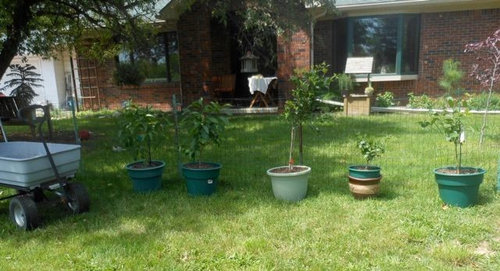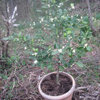collection of citrus trees and panic attacks
susanne42
10 years ago
Related Stories

LIFE‘A Little Bold Color Goes a Long Way’ and Other Houzz Quotables
Home projects, advice and even a tour of a castle captured our attention this week
Full Story
TRADITIONAL HOMESHouzz Tour: Antiques and Old-World Luxury in the San Francisco Hills
Traditional furnishings and muted colors complement European architecture in a beautifully remodeled 1912 house
Full Story
DECORATING GUIDESFrom Queasy Colors to Killer Tables: Your Worst Decorating Mistakes
Houzzers spill the beans about buying blunders, painting problems and DIY disasters
Full Story
PETSPet-Proofing Your Home: A Room-by-Room Guide
Not all pet dangers are obvious. Keep furry friends safe and sound by handling all of these potential hazards
Full Story
ENTERTAININGHow to Stay Sane When Hosting Christmas
We offer a dozen tips for getting organizing and enjoying the big day
Full Story
FUN HOUZZ10 Things People Really Don’t Want in Their Homes
No love lost over fluorescent lights? No shocker there. But some of these other hated items may surprise you
Full Story
WHITEWhat to Know Before You Paint Your Walls White
A coat of white paint can do wonders in one room and wreak havoc in another. Here are tips for using the popular hue
Full Story
SELLING YOUR HOUSEHow to Stage Your Kitchen for a Home Sale
Attract buyers with a kitchen that’s clean, bright and welcoming — no expensive overhaul required
Full Story
BATHROOM DESIGNNew This Week: 5 Bold Wallcovering Ideas for Powder Rooms
Take cues from these spaces to supercharge one of the most used rooms in your home
Full Story
BATHROOM WORKBOOKStandard Fixture Dimensions and Measurements for a Primary Bath
Create a luxe bathroom that functions well with these key measurements and layout tips
Full Story




susanne42Original Author
susanne42Original Author
Related Discussions
Help ID Possible Citrus Pest/Predator
Q
Thrips attacking my basil- how to control while pregnant?
Q
sweet citrus trees in 2015 diary
Q
Citrus Mealybug infestation
Q
susanne42Original Author
susanne42Original Author
hoosierquilt USDA 10A Sunset 23 Vista CA
susanne42Original Author
mksmth zone 7a Tulsa Oklahoma
susanne42Original Author
hoosierquilt USDA 10A Sunset 23 Vista CA
trianglejohn
susanne42Original Author
hoosierquilt USDA 10A Sunset 23 Vista CA
susanne42Original Author
Scott_6B
hoosierquilt USDA 10A Sunset 23 Vista CA
susanne42Original Author
susanne42Original Author
hoosierquilt USDA 10A Sunset 23 Vista CA
johnmerr
Scott_6B
johnmerr
Scott_6B
susanne42Original Author
greenman28 NorCal 7b/8a
susanne42Original Author
greenman28 NorCal 7b/8a
susanne42Original Author